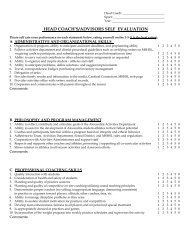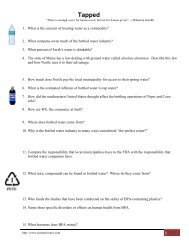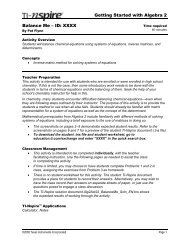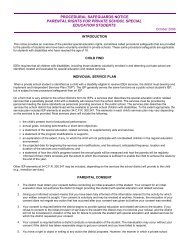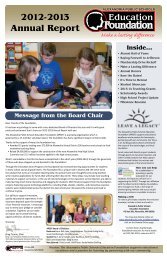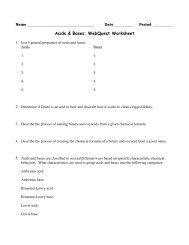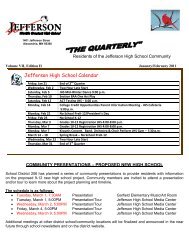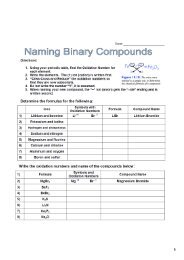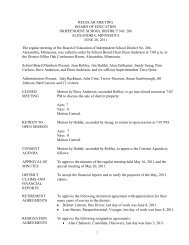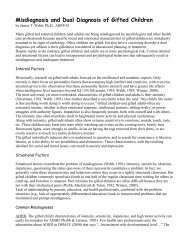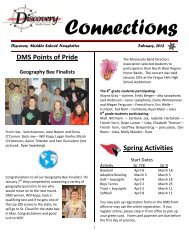Chapter 4 - Implementing a System of Research-based Interventions
Chapter 4 - Implementing a System of Research-based Interventions
Chapter 4 - Implementing a System of Research-based Interventions
You also want an ePaper? Increase the reach of your titles
YUMPU automatically turns print PDFs into web optimized ePapers that Google loves.
<strong>Chapter</strong> 4 <strong>Implementing</strong> a <strong>System</strong> <strong>of</strong> <strong>Research</strong>-Based <strong>Interventions</strong><br />
Building a <strong>System</strong> <strong>of</strong> Scientific <strong>Research</strong>-Based <strong>Interventions</strong><br />
Prior to building a system <strong>of</strong> interventions, school and<br />
teams should thoroughly evaluate their core curriculum and<br />
instructional practices at the primary level <strong>of</strong> prevention to<br />
ensure they are scientifically research-<strong>based</strong>, feasible, and<br />
that the critical areas <strong>of</strong> instruction are in place.<br />
Pilot site staff implementing a system <strong>of</strong> SRBI report that<br />
analysis <strong>of</strong> core practices is essential and highly discourage<br />
skipping analysis <strong>of</strong> core instructional practices in order to<br />
focus on selecting interventions. Teams that select<br />
interventions without thoroughly understanding the<br />
strengths and weaknesses <strong>of</strong> the core curriculum run a risk<br />
that selected interventions will not meet their long-term<br />
needs. Some districts have identified obvious gaps and<br />
selected secondary and tertiary supports to address those<br />
Minnesota Rule requires<br />
that teams specify the<br />
details <strong>of</strong> their systems<br />
used to generate data for<br />
eligibility determinations.<br />
For each content area,<br />
include related estimated<br />
timelines, and decision<br />
rules for how students will<br />
move through interventions<br />
(Minnesota Rule<br />
3525.1341)<br />
issues with an understanding that it is as an interim step. Simultaneously the team is<br />
working on training staff to systematically analyze alignment and implementation <strong>of</strong> core<br />
instruction.<br />
Illustrative Example<br />
Happy Valley school team began to use the Consumer’s Guide to Evaluating a Core<br />
Reading Program Grades K-3 (Simmons and Kame’enui) to help them analyze their<br />
reading practices prior to selecting interventions. This practice has since become an<br />
established precedent for other teams.<br />
To analyze core practices for adolescent literacy, see Model Secondary Plan, developed<br />
by the Minnesota Department <strong>of</strong> Education to assist secondary schools in revising their<br />
reading instructional practices.<br />
Additionally, school staff have found benefit in analyzing implementation <strong>of</strong> their core<br />
practices to understand if curriculum maps are current and are followed as designed. Once<br />
satisfied that core curriculum and instructional practices have been implemented correctly,<br />
school-wide data is used to identify performance gaps and lead to selection <strong>of</strong> appropriate<br />
interventions.<br />
After achievement data and core practices have been thoroughly reviewed, teams will<br />
have valuable data to assist in selecting appropriate research-<strong>based</strong> interventions. The<br />
SRBI research community developed two conceptual models <strong>of</strong> RTI: a standard treatment<br />
protocols for interventions, and a problem-solving approach. The table below includes<br />
definitions <strong>of</strong> both and the parameters in which they are effective.<br />
Minnesota Department <strong>of</strong> Education Draft 4-4



